Photos by Scott Buschman
When California became the second state in the country (after Minnesota) to enact charter school legislation, it was meant to allow greater flexibility for innovation within public education.
The intent of the Charter Schools Act of 1992 was to provide opportunities for teachers, parents, students and community members to establish schools that operate independently from the existing school district structure. This flexibility would be a way to improve student learning, increase learning opportunities for all students, encourage the use of innovative teaching methods, create professional opportunities for teachers, and provide parents and pupils with expanded choices within the public school system.
 Since then, charter schools have expanded in California (there are now more than 1,200, with 56 opening in 2016-17 alone), and the original intent often takes a backseat to corporate endeavors. Increasingly, charter schools are operated by large private management organizations where important decisions are frequently made without sufficient oversight, far from the school communities and students they are meant to serve.
Since then, charter schools have expanded in California (there are now more than 1,200, with 56 opening in 2016-17 alone), and the original intent often takes a backseat to corporate endeavors. Increasingly, charter schools are operated by large private management organizations where important decisions are frequently made without sufficient oversight, far from the school communities and students they are meant to serve.
“The original intent of the law underscored the importance of charter schools developed at the local site level and with the full participation of all stakeholders, including educators, school board members, parents, guardians and other community members,” says CTA President Eric Heins. “But corporate, for-profit companies have hijacked the system, and there is no accountability and transparency for how they spend taxpayer money.”
Our special report on charter schools
Follow the links below to see the other parts of this feature.
Let’s Be Clear About Charter Schools
Helix Charter: Transparency Keeps Things Real
K12: Not Making the Grade
Alliance: Organizing to Have a Say
Rocketship: Failing Their Students, Educators
Livermore: A Cautionary Tale
Celerity: The Opposite of Austerity
Follow the Money
Advocating for Transparency, Accountability and Equal Access
Charter schools are public schools funded by taxpayers, yet many do not hold themselves accountable to the standards other public schools are held to. For example, many don’t share financial records, hold open meetings, or adopt conflict-of-interest policies. Charter school boards are typically appointed, not elected, leaving a board more beholden to those in charge than those it serves.
This lack of oversight and transparency has paved the way for fraud, corruption and mistreatment of students and staff at an increasing number of charter schools, documented in multiple studies and reports. It has also led to some charters denying equal access to students.
CTA has been working on the legislative and organizing fronts to address these issues. The union has welcomed charter school educators and helped them have a voice in their schools. Approximately 250 of California’s charter schools are unionized, and CTA proudly represents more than 7,300 charter educators.
CTA knows charter school teachers, like traditional public school teachers, care deeply about their students and work hard to help them succeed. Many charter schools are locally driven, provide an excellent education and deserve our support. For example, Green Dot Public Schools California is a Los Angeles charter operator that strives to be open, equitable and inclusive.
But when student learning takes a backseat to corporate profits, CTA cannot stand idly by.
“What we are seeing as the dominant norm these days — corporate charters making education a business and profiting on the backs of our children — is just not acceptable and shouldn’t be allowed any longer in California,” says CTA Board member Terri Jackson, chair of CTA’s Organizing Task Force.
Parents were told not to worry
Parents stand outside Celerity Dyad Charter School in South Los Angeles at 2 p.m. to pick up their children.
The few who are willing to be interviewed say they are pleased with the school. They say teachers do a wonderful job of going the extra mile to help students succeed.
When asked if they are worried about the future of Celerity, most are unaware that the school’s operator, Celerity Educational Group, is being investigated for fraud and corruption by the FBI, the Department of Homeland Security, and the U.S. Department of Education — or that their school could close, since its charter wasn’t renewed. (The State Board of Education, in fact, voted to close Celerity Dyad and sister school Celerity Troika on May 11, 2017.)
A father who wishes to remain anonymous says he has read Los Angeles Times articles about lavish spending by Celerity management and is aware the FBI raided Celerity’s LA headquarters and removed computers for its investigation.
“My wife and I worry,” he admits. “We are very poor. We want our kids to have a good education so they can succeed and have a better economic situation than where they come from. It bothers me if kids are not getting what they need because someone is stealing. That’s a crime. It’s sad if people are taking advantage of a population where most of the people can’t speak English.”

Julio Rodriguez
Julio Rodriguez, who has two children at the school, knows that the school’s charter was not renewed and that an appeal was filed. “I received a letter that said if the school closes down, it will close in name only and reopen under another name,” he says. “Parents were told not to worry.”
The fraud and corruption charges Celerity faces are not unusual. State regulators have uncovered more than $81 million in fraudulent and wasteful spending at charters throughout the state, reports Kids Not Profit, a coalition of education, parent, civil rights and community organizations (including CTA) dedicated to changing the type of behavior that prompted the Washington Post headline “Why California’s charter school sector is called ‘the Wild West.’ ”
Nonetheless, profiteers have a “master plan” to put half of all Los Angeles Unified School District (LAUSD) students into unregulated, privatized charter schools by 2023. (LAUSD already has more charter students — estimated at 130,000 — than any other U.S. school district.) Billionaire Eli Broad contributed half a billion dollars to the cause, with more donated from other billionaires, including the Walton family of Wal-Mart.
United Teachers Los Angeles (UTLA) is committed to fighting the takeover. Last year 82 percent of UTLA members voted to approve a dues increase to fund the fight.
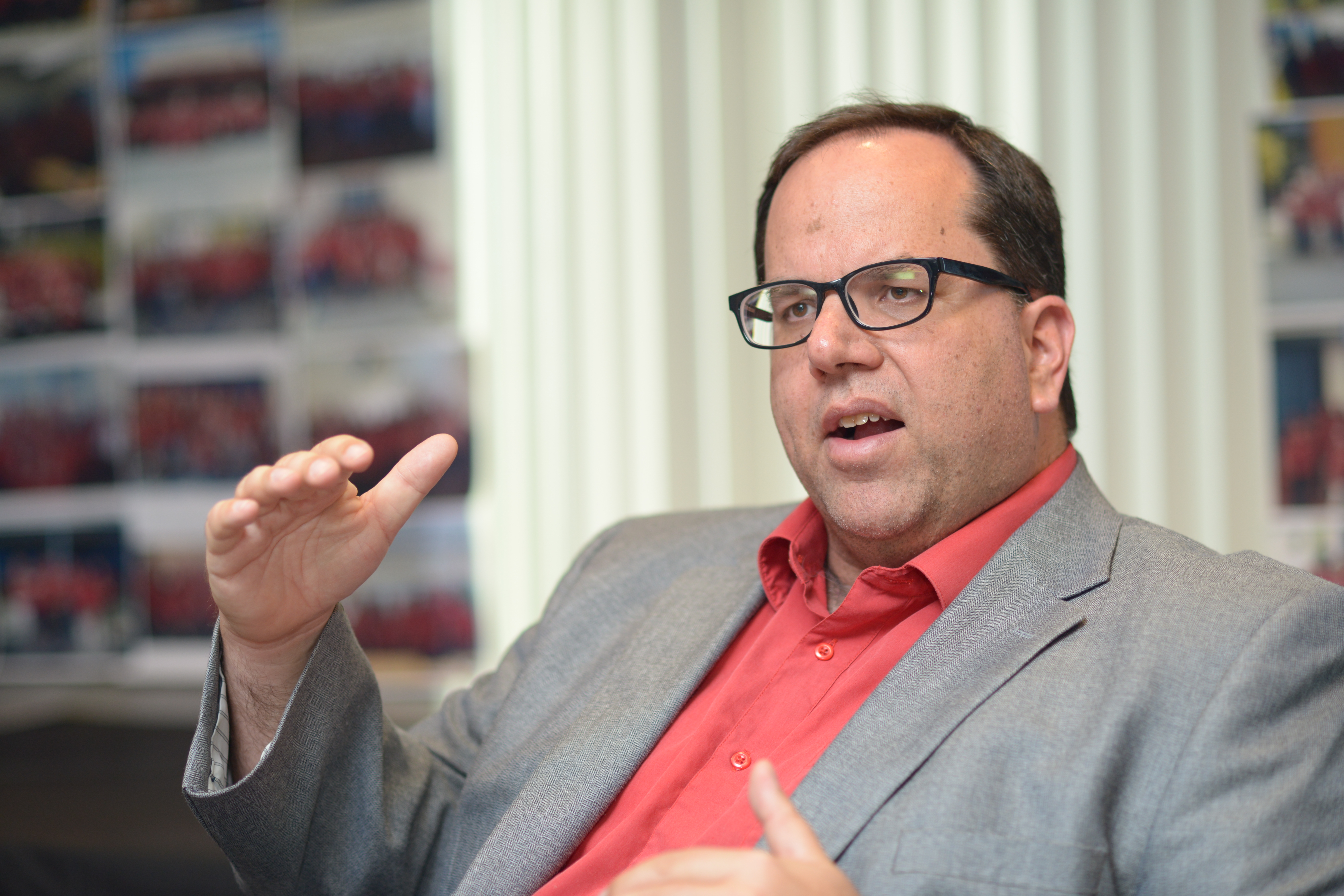
Alex Caputo-Pearl
“It’s an absolutely ongoing battle and multiyear struggle,” says UTLA President Alex Caputo-Pearl. “Broad has an eight-year plan. We have a similarly long view.”
Caputo-Pearl adds that UTLA represents more than 1,000 charter school teachers and is not fighting against them or parents whose children attend charters.
“We are fighting against deregulation and privatization of public education. We are fighting for our schools to be the best they can be — and become community schools that parents and students feel ownership of,” says Caputo-Pearl.
Draining public schools
LAUSD is not the only district eyed for takeover. Capital & Main revealed a secret plan, also financed by billionaire profiteers, to put 50 percent of Oakland Unified School District (OUSD) students into corporate charters.
Unknown to Oakland’s parents until recently — and without open debate by the school board — the charter expansion scheme for Oakland is an open secret, comments Bruce Fuller, an education and public policy professor at UC Berkeley. Fuller believes massive charter school expansion will push Oakland toward bankruptcy, because taking half of the district’s students means taking half of the district’s Average Daily Attendance (ADA) funding, while schools must continue paying salaries and operating costs.
Approximately 25 percent of OUSD students are enrolled in charter schools — compared with 16 percent of total enrollment in LAUSD — making it the district with the highest percentage of charter-enrolled students in the state.
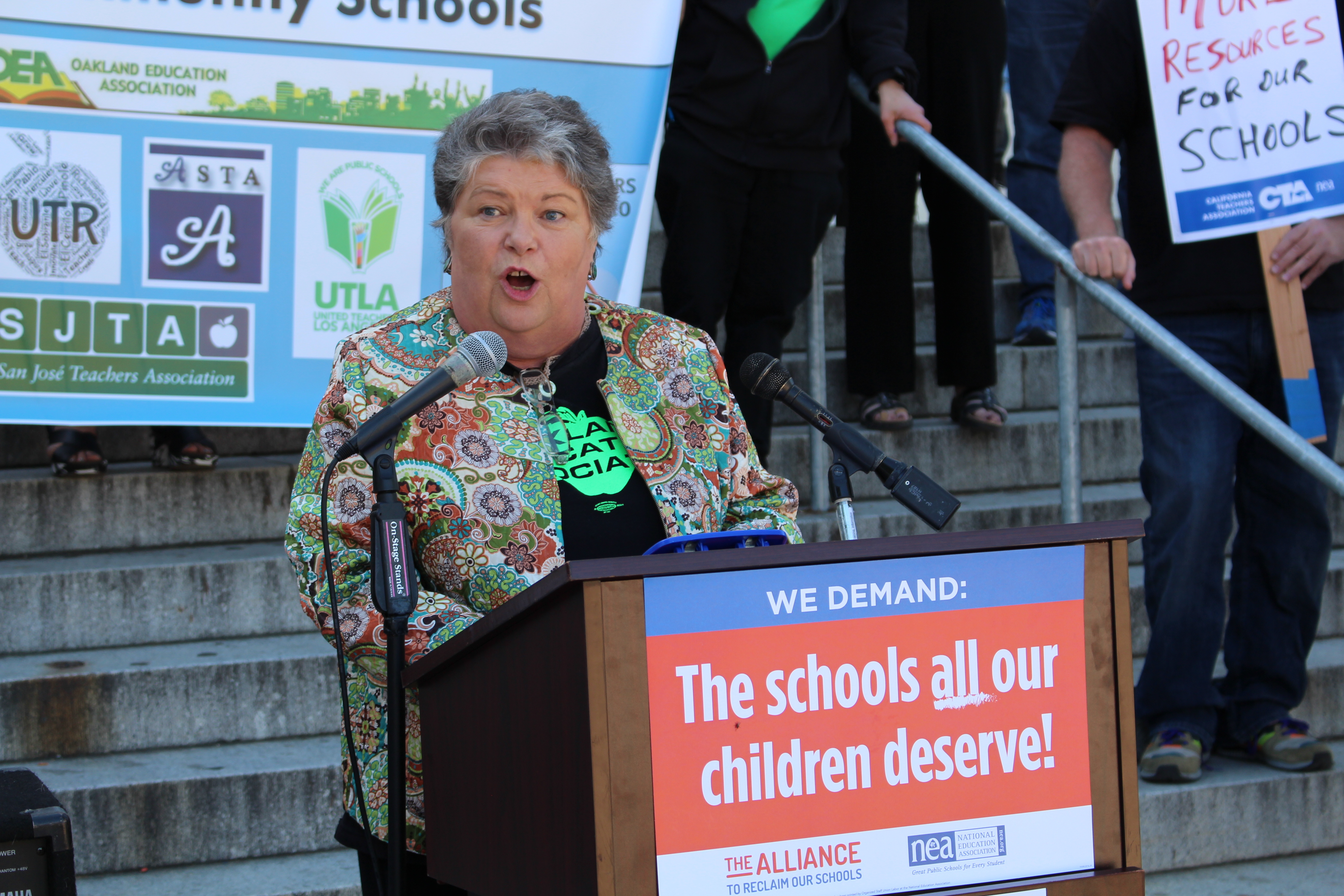
Trish Gorham
Trish Gorham, president of the Oakland Education Association (OEA), fears charter school expansion will put Oakland at the tipping point by taking the cream of students and leaving traditional schools with those with learning disabilities and other challenges that require more costly services from schools.
“Eli Broad wrote that Oakland is a prime target for takeover by national charter school organizations,” says Gorham. “The Rogers Family Foundation declared it wants to have 20,000 ‘quality seats’ in Oakland by 2020. In charter school lingo, quality seats equal charter seats. Oakland, like other districts in the country targeted for takeover, has a high percentage of poor and bilingual students with parents desperate for any kind of resources.”
The Oakland-based Rogers Family Foundation, founded by former Dreyer’s Grand Ice Cream chairman and CEO T. Gary Rogers and his wife, created a nonprofit ironically named GO (Great Oakland) Public Schools. GO unleashed an avalanche of out-of-town money to elect pro-charter school board candidates and influence elections, says Gorham.
OEA, with some financial help from CTA, contributed $40,000 toward electing public education advocates to the school board during the 2016 election, but charter school proponents poured $700,000 into the campaign, winning three of the four seats.
“We cannot compete with that kind of money,” says Gorham. “And it’s happening up and down the state with school boards, counties and city council seats. They are purchasing seats to get results. It’s pay to play.”
Gorham insists she’s not a conspiracy theorist, but says she has no doubt a conspiracy is afoot.
“All you have to do is look at the appointment of Betsy DeVos and see that, yes, there really is a plan funded by billionaires to destroy our public school system as we know it, which takes away the guarantee of a free and public education that is the foundation of our democracy. We all need to wake up and fight against something that was predicted 20 years ago, which is now at our doorstep.”
Who controls public education?
Public education is a $600 billion industry — and the last bastion of government in which private enterprise does not yet have a major stake. So-called reformers may say they advocate for school choice, but contribute money to PACs with an eye toward privatizing public schools and running them as a business.
But privatization of other institutions has not gone so well, points out education expert Diane Ravitch. For example, the Federal Bureau of Prisons concluded that privatized prisons were not as safe and were less likely to provide effective programs for education and job training to reduce recidivism. Privately run fire departments sometimes charge homeowners to put out fires. And doctors in privatized hospitals may perform unnecessary surgeries to increase revenues, or avoid treating patients whose care is too costly.
A key goal of privatization is eliminating unions, cutting worker benefits, expanding work hours, and laying off veteran employees who earn the most, adds Ravitch, noting that privatization eliminates protections against many rights workers take for granted.
The question, then, is what the real choice is when it comes to who controls public education. Should districts be governed by communities, teachers, education professionals and democratically elected school boards? Or should public education be left to profiteers who want to make money from educating children?
Districts have little control
It’s not difficult to open a charter school. But it’s very difficult to prevent one from opening.
Charter management organizations (CMOs) are not required to show there is a need for additional classroom seats in the district — unlike school districts seeking to build new sites. Also, they are not required to prove their school offers a superior education or targets an underserved population to be granted a charter.
Many districts have denied charters, only to see them approved by the county or the State Board of Education. Private charter management companies are able to run schools and operate completely separate from the district.
When a charter authorizer is outside the district, oversight is not at the local level and is usually infrequent, reports In the Public Interest (ITPI), a comprehensive research and policy center committed to democratic control of public goods and services. A school’s charter must be renewed every five years by its authorizing agency. Nonrenewal often leads to a lengthy appeal process.
School districts are required by law to provide free space to charter schools, even when it is a hardship for existing schools. Prop. 39, passed in 2000, requires school districts to make “reasonably equivalent” facilities available to charter schools upon request. This has sparked battles in some communities.
Frequently, charters simply move in and colocate in other schools for free. In districts where space is tight, charter schools operate in malls or warehouses. A former Los Angeles charter teacher now teaching in Lynwood recalls sharing space with a church; students had to walk past coffins on their way to class. At virtual schools, facilities are not an issue, since students rarely if ever see teachers.
CMOs are building empires
Over the past 15 years, California charter schools have received more than $2.5 billion in tax dollars to lease, build or buy school buildings. A new report by ITPI, “Spending Blind: The Failure of Policy Planning in California Charter School Funding,” reveals that a substantial portion of this money — an estimated $1 billion — was spent on charters that performed worse than nearby traditional public schools, were built in neighborhoods that already had enough classroom space, were found to have discriminatory enrollment policies, or engaged in unethical or corrupt practices.
In addition, in some cases CMOs have been able to keep buildings used as charter schools as their private property.
CMOs in fact have built vast empires by constructing private real estate holdings worth tens of millions of dollars. For example, the charter school network Alliance College-Ready Public Schools benefited from over $110 million in federal and state taxpayer support for its facilities, which are not owned by the public, but are part of a growing empire of privately owned Los Angeles area real estate now worth more than $200 million.
Sometimes CMOs act as both building owner and landlord to charter schools, with a charter school paying “rent” to CMOs for schools built with public funds.
Bob Lawson, director of ITPI special projects, says the tangled web is often difficult to unravel.
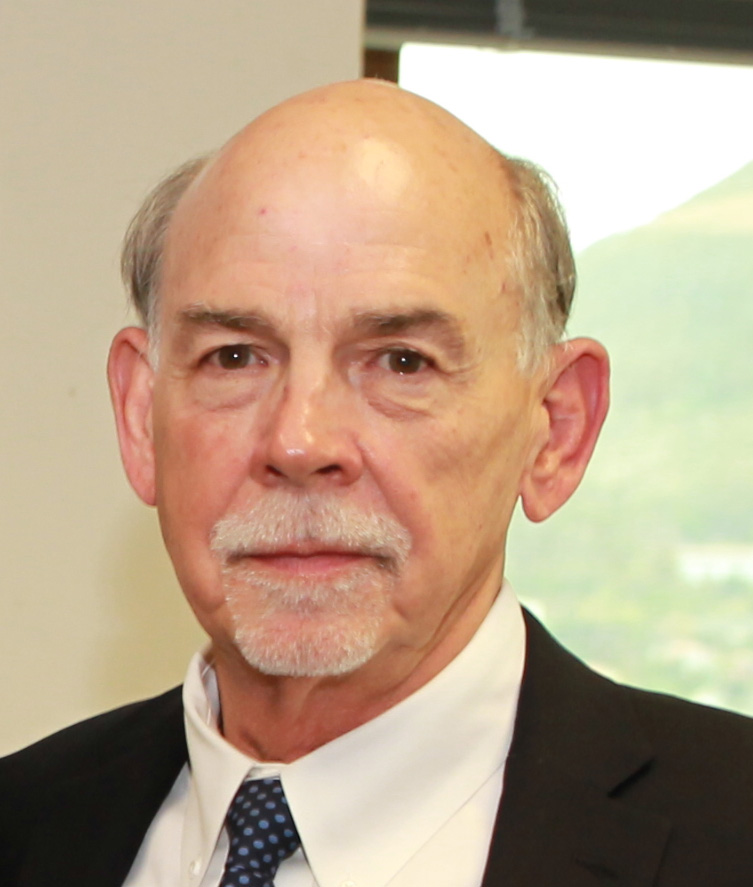
Bob Lawson
“There are so many corporatized charters that have become national chains that in many cases, you can’t understand or know who is running the school. It’s contracted out to a charter management organization which subcontracts to other organizations, and when you ask questions, they will claim that information is proprietary.”
The taxpayer money used by CMOs to lease, purchase and build their own school buildings results in the overbuilding of charter schools and creates a “significant crisis” for many school districts, according to ITPI. In a time of scarce resources and great needs, public funds are being spent on overbuilding of charter schools that are not needed and not any better than existing neighborhood schools, while draining resources from them.
Further, the ITPI report notes that charter schools constructed with conduit bonds (issued by a municipality on behalf of a private entity) become the private property of the charter operator. Even if the charter is revoked, neither the state nor the local school district can take control of the property.
Charters constructed or acquired with private funds but whose mortgage payments are reimbursed through the state’s Charter School Facility Grant Program are typically owned without restriction. If such schools close down, owners can turn the buildings into condos or retail space, or sell the property at a profit. “Neither the school district nor any other public body is entitled to recoup the public dollars that have gone toward creating the facility,” says the report.
Parents denounce false promises
“Families are caught in the crosshairs of a very contentious political battle,” says Clarissa Doutherd. “The fact that the corporatization and privatization of education is taking money and resources out of public schools is a concern for me.”
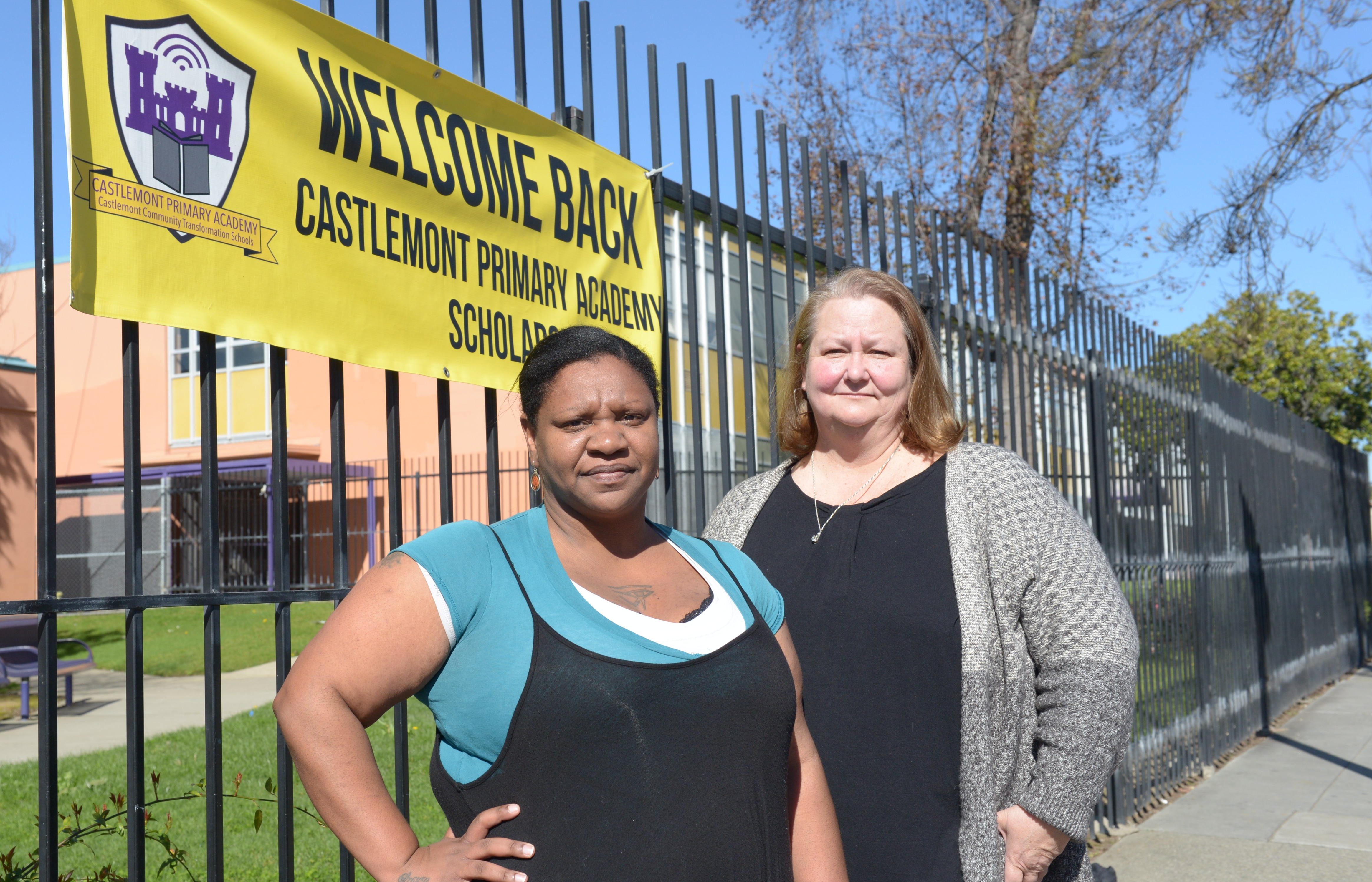
Clarissa Doutherd, Kim Davis
Doutherd, executive director of Parent Voices Oakland, stands with Kim Davis of Parents United for Public Schools on a sidewalk in front of a chain-link fence surrounding the recently shuttered Castlemont Primary Academy. The school, which shared space with the still-operating Castlemont High School, closed abruptly in February, displacing nearly 100 Oakland students.
Charters often close — sometimes in the middle of the school year — leaving students and staff stranded. Thirty-two charters were shuttered last year in California, making the state second in the number of closures nationwide (after Florida with 35), according to the National Alliance for Public Charter Schools. And closures mean taxpayers and districts are left with unpaid bills and forced to pick up the pieces.
The primary school — along with the Castlemont Junior Academy for teens, which closed in 2016 — was opened in 2015 by the nonprofit Youth UpRising, which ran out of money despite generous funding from the state and private donors, including the Walton family.
Taking on additional students after charters close has cost OUSD several hundred thousand dollars at a time when it faces a tremendous shortfall. Neither Davis’ nor Doutherd’s children attended the closed campuses, but they worry about plans to increase charter schools in their community.
“The Castlemont schools promised many things to these families in terms of community supports, academic interventions, and other things that were not available to them,” says Davis. “But they didn’t have enough money to function, and that impacted individual families a great deal. There has been an absolute lack of accountability for making sure charters are doing what they are supposed to be doing.”
Doutherd says billionaires don’t understand the dynamics of Oakland’s vibrant history and unique culture or the challenges they face, and worries charters are becoming the “McDonald’s” of education.
“As the mother of an African American son with special needs who is really struggling in the public school system, I have made the personal and political choice for my family to invest in the public school system for my son. But many families feel forced into other options when their children’s needs are not being met. Children, quite frankly, are being pipelined into prison. So, we as a community need to do some organizing and do the necessary work to build up public education, so we’re not vulnerable to corporate and private interests.”
Charter school proponents often target poor and minority families, telling parents that charters will “save” their children from
a poor or indifferent public school system. However, a legacy of broken promises is changing that perception. In October, the NAACP Board of Directors called for strengthening public oversight of charter schools’ governance and practice.
“We are moving forward to require that charter schools receive the same level of oversight [and] civil rights protections and provide the same level of transparency as traditional public schools,” said Roslyn M. Brock, then NAACP chairman. “Our decision today is driven by a long-held principle and policy of the NAACP that high-quality, free public education should be afforded to all children.”
Brock and the NAACP called for a moratorium on charter school expansion until:
- Charter schools are subject to the same transparency and accountability standards as public schools.
- Public funds are not diverted to charter schools at the expense of the public school system.
- Charter schools cease expelling students that public schools have a duty to educate.
- Charter schools cease to perpetuate de facto segregation of the highest-performing children from those whose aspirations may be high but whose talents are not yet as obvious.
Charters cherry-pick students
Before Julian Vasquez Heilig became a professor of educational leadership and policy at Sacramento State University, he was involved with charter schools. The California Faculty Association member served on a charter school board in Texas and was a “21st century instructor” or teacher’s aide at Aspire Elementary and Middle School in East Palo Alto.
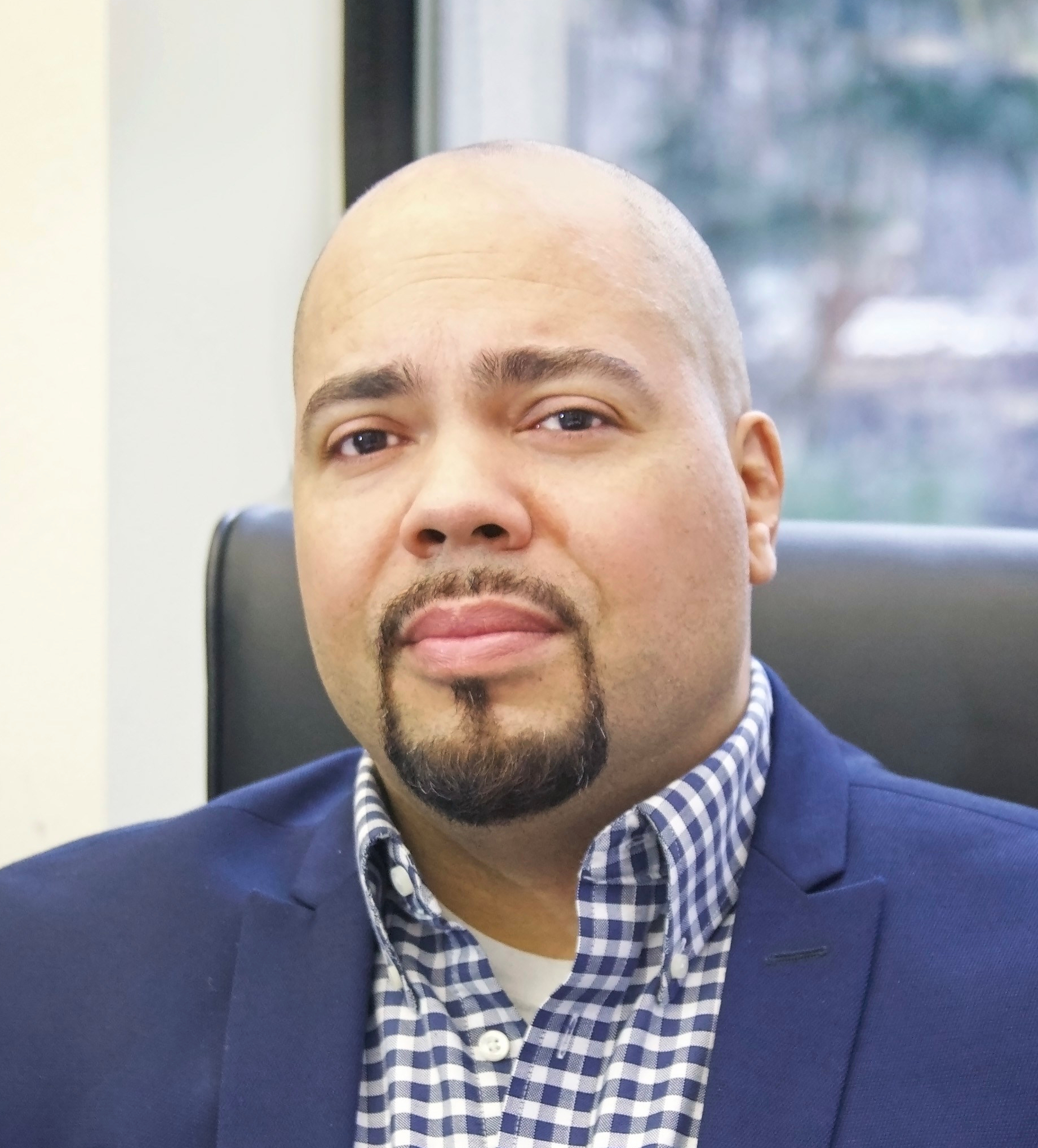
Julian Vasquez Heilig
At Aspire, he enjoyed working with a fourth-grader named Gary, who was energetic, precocious and intelligent. He was also at times mildly disruptive and perhaps a bit hyperactive.
One day, recalls Heilig, Gary disappeared. Heilig learned he had been expelled from the charter school and replaced with a new student from a waiting list because he didn’t fit the mold of a typical student. Heilig was dismayed and disillusioned.
“I am angry that a child as bright and promising as Gary can be so easily expunged,” he says.
Charter schools by law cannot discriminate against students based on disability, ethnicity or national origin. Yet many do. An American Civil Liberties Union (ACLU) report, “Unequal Access: How Some California Charter Schools Illegally Restrict Enrollment,” finds that out of 1,200 charter schools in California, at least 253 (more than 20 percent) have policies that are “plainly exclusionary,” such as:
- Denying enrollment to and expelling students who do not have strong grades or test scores.
- Denying enrollment to students who do not meet a minimum level of English proficiency.
- Discouraging or precluding immigrant students from attending by requiring parents to provide Social Security numbers or proof of citizenship.
- Refusing to enroll students unless their parents volunteer their time or donate money.
Research shows challenging students are routinely “counseled away” from charter schools when they attempt to enroll. Unlike traditional public schools, students can be expelled without due process, and charters have a national suspension rate 16 percent higher than other public schools. A report by UCLA’s Center for Civil Rights reveals that in 2011-12, black students were four times as likely to be suspended from charters as white students. And of the 5,250 charter schools studied, 235 suspended more than 50 percent of their students with disabilities.
“These exclusionary policies violate the California Education Code, the California and U.S. constitutions, and state and federal civil rights law,” states the ACLU.
CTA-backed AB 1360 seeks to prohibit discriminatory practices in charter access and due process.
CTA seeks charter oversight
CTA has worked with elected leaders to create legislation that addresses many of the issues around charters, including responsible use of public funds and local control of education and resources.
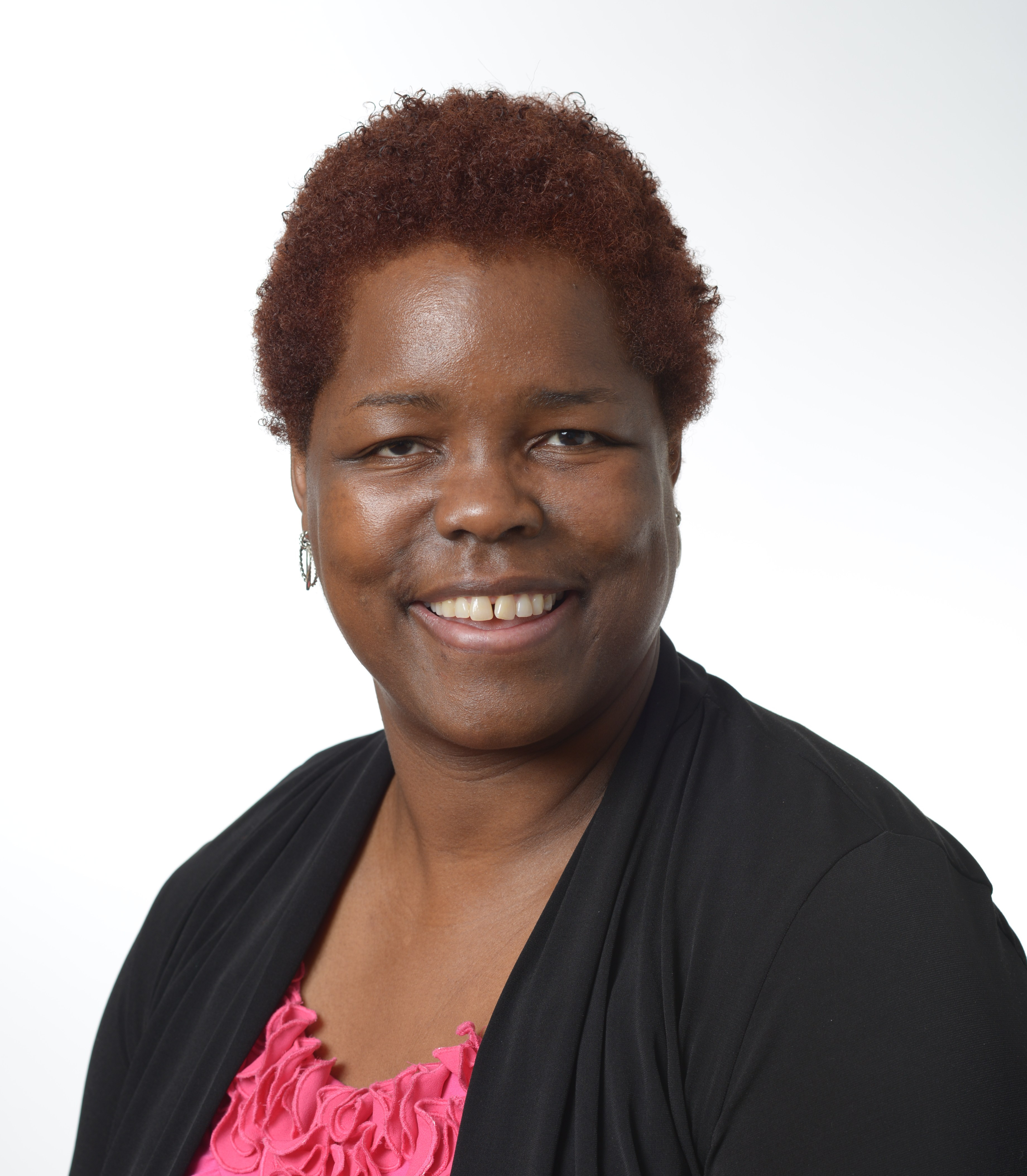
Terri Jackson
“CTA’s goal is to make charter schools the way the law intended them to be — democratically run — so students, parents and the community have a voice, instead of being run by distant corporations carpetbagging our school system so billionaires can make money,” says Terri Jackson, a fourth-grade teacher and United Teachers of Richmond member who serves on the CTA Board.
The proposed laws reflect a new way of thinking, says Lawson of In the Public Interest. He notes that under current law, “the impact of a charter school on surrounding schools can’t be considered when approving a charter application. But we think it should be, and that the law should change. New legislation would allow that through local control.”
When CTA attempted to pass legislation last year to make charters accountable and mandate transparency, it was vetoed by Gov. Jerry Brown, a charter school founder. CTA has worked hard to reintroduce three bills — AB 1478, AB 1360 and SB 808 — which, in addition to making charters transparent and accountable, prohibit discriminatory admissions and enrollment practices and legislate local control of charters.
“CTA is not going to stand by and allow billionaires to profit on the backs of students or allow charter schools to operate without transparency and accountability,” says Heins, noting that President Trump’s proposed budget provides a $168 million increase in funding for unregulated charter schools — as well as millions more for private school vouchers. “Our students deserve better. Our parents deserve better. And our teachers deserve better.”
Navigation
Follow the links below to see the other parts of this feature story.
Let’s Be Clear About Charter Schools
Helix Charter: Transparency Keeps Things Real
K12: Not Making the Grade
Alliance: Organizing to Have a Say
Rocketship: Failing Their Students, Educators
Livermore: A Cautionary Tale
Celerity: The Opposite of Austerity
Follow the Money
Advocating for Transparency, Accountability and Equal Access
The Discussion 0 comments Post a Comment